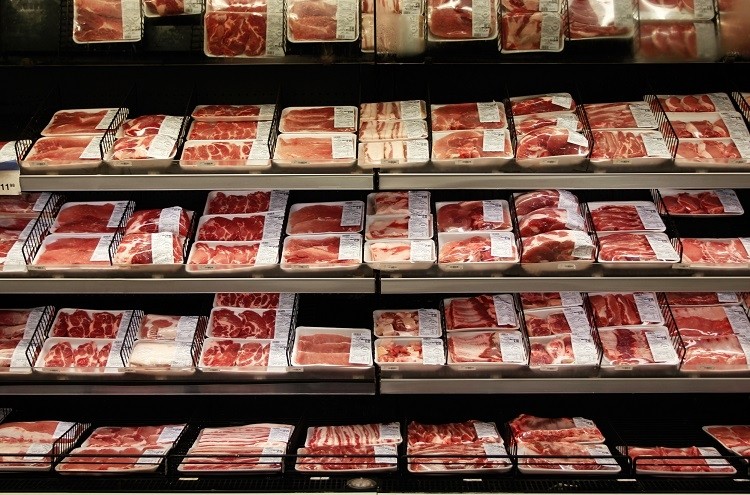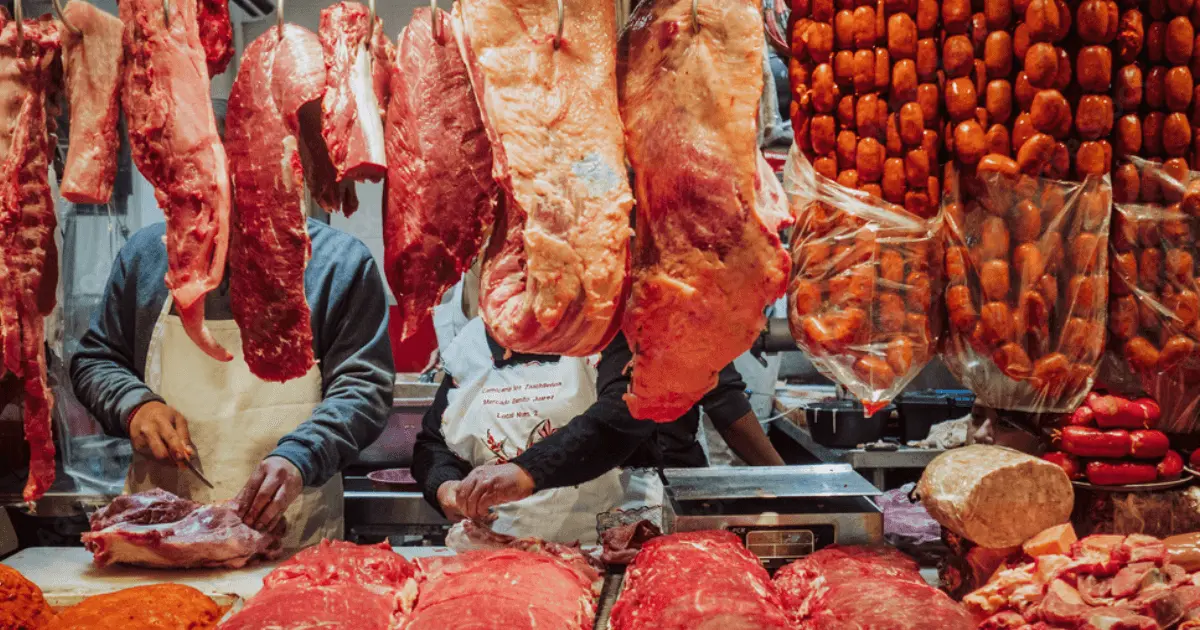What Makes Bagley Farms Meat Market Edwardsville IL Stand Out for Meat Lovers
Uncover the Art of the Butcher's Cut in a Modern Meat Market
In the ever-evolving landscape of modern-day meat markets, the butcher's cut has actually transcended its standard roots, combining old-time workmanship with contemporary practices. bagley farms meat market edwardsville il. Today's butchers are not simply cpus of meat; they are educated artisans who highlight sustainability and moral sourcing. Their competence in selecting and preparing cuts customized to particular cooking demands uses an unparalleled eating experience. What truly sets the modern butcher apart is their ability to build a much deeper link between customers and the origins of their meat. Exactly how do these masters equilibrium custom with development, and what ramifications does this have for the future of meat usage?
Evolution of Butchery Strategies

The mid-20th century saw butchery strategies even more refined by scientific insights into muscle biology and meat aging, enhancing both inflammation and preference. Technologies like vacuum cleaner packaging and refrigeration extended product shelf-life, permitting butchers to diversify offerings and boost quality control. This period also noted the increase of specialized tools, such as band saws and meat slicers, which boosted precision and efficiency in meat processing.
The 21st century has actually presented electronic technology right into the butchery world. Digital systems currently aid in tracking pet provenance and enhancing cuts to fulfill specific client choices. Additionally, a resurgence in artisanal butchery has actually emerged, blending standard skills with modern expertise to deal with consumers looking for ethical and lasting meat options. This evolution emphasizes a vibrant interaction in between custom and development, conference modern needs while preserving the craft's heritage.

Understanding Meat Cuts

Understanding the complexities of meat cuts is vital for both butchers and consumers seeking high quality and value. For butchers, exact cuts mirror ability and regard for the craft, guaranteeing very little waste and optimal return.
The primary groups of meat cuts consist of primal, sub-primal, and retail cuts. Primitive cuts, such as the loin, rib, and chuck, are the large sections initially divided from the carcass. Butchers then break these down better into sub-primal cuts, prior to finally producing retail cuts offered to consumers, like ribeye or tenderloin. Each phase requires cautious focus to physiological structure and muscular tissue structure.
Comprehending muscle make-up is important; muscle mass utilized my latest blog post a lot more frequently by the pet have a tendency to be harder and are best suited for slow-moving cooking methods, while less-used muscle mass, like those found in the loin, are extra tender and suitable for grilling or roasting. Familiarity with these distinctions encourages customers to make informed selections, improving their cooking useful site endeavors.
Choosing Top Quality Meat
Choosing the best meat entails even more than just selecting an aesthetically enticing piece from the display. The art of selecting high quality meat needs a critical eye and understanding of specific attributes that represent quality and quality.
Secondly, consider the marbling, which refers to the white flecks of fat within the muscle mass. Appropriate marbling is a key indicator of tenderness and flavor, as it thaws throughout food preparation, enhancing the meat's juiciness. Bear in mind, greater marbling frequently associates with premium quality cuts, such as USDA Prime.
Texture is another vital aspect; meat must really feel firm to the touch, not slimed or extremely soft. Furthermore, bear in mind the scent. Fresh meat needs to have a tidy, neutral scent, devoid of any sour or off-putting odors.
Coupling Cuts With Cooking Approaches
Effectively pairing cuts of meat with the ideal cooking techniques is crucial for attaining optimum flavor and structure. Different cuts differ in tenderness, marbling, and connective cells material, each needing certain strategies to open their potential. For example, tender cuts like filet mignon and ribeye, with their fundamental marbling, take advantage of high-heat, quick-cooking approaches such as barbecuing or pan-searing. These approaches boost the meat's natural flavors and ensure a juicy coating.
Alternatively, harder cuts like brisket and chuck roast are abundant in collagen, which breaks down right into jelly when prepared slowly. These cuts are ideal for braising or sluggish roasting, allowing the meat to soften in time and create deep, complicated flavors. Cuts such as short ribs and pork shoulder fare well with slow-cooking methods, where prolonged cooking times transform their durable appearances into succulent dishes.
Lamb shanks and oxtail, which require prolonged food preparation to tenderize, are perfect candidates for cooking or slow simmering. These approaches coax out abundant, passionate tastes while keeping wetness. By Check Out Your URL understanding the unique characteristics of each cut, chefs and home chefs alike can elevate their cooking productions, making certain each recipe is both satisfying and remarkable.
The Butcher's Function Today
Browsing the developing landscape of the modern meat market, the butcher's role today prolongs beyond plain preparation of cuts. Contemporary butchers are culinary craftsmens, instructors, and advocates for sustainable techniques.
In enhancement to crafting exact cuts, butchers now engage straight with customers, using cooking advice and customizing choices to fit individual needs and choices. Their know-how in meat aging, marbling, and flavor accounts equips consumers to make educated choices, boosting their cooking experiences. This customized solution exhibits the butcher's evolving duty as a trusted advisor in the cooking area.
Additionally, butchers are essential in reducing waste, making use of whole animals to create varied items such as sausages and supplies - bagley farms meat market edwardsville il. This thorough technique not only appreciates the animal however additionally straightens with contemporary sustainability objectives. This way, the contemporary butcher embodies both tradition and advancement, adapting to an ever-changing market while preserving the virtuosity and honesty of their craft

Conclusion
The modern butcher's craft elaborately weaves conventional techniques with contemporary advancements, emphasizing lasting methods and ethical sourcing. Mastery in comprehending diverse meat cuts and high quality indications empowers butchers to offer enlightened referrals, lining up specific cuts with optimal food preparation techniques. This competence not just elevates culinary experiences however likewise strengthens the link between customers and the origins of their food. By recognizing historic methods while welcoming modern demands, the butcher's role remains important in today's sophisticated meat market.